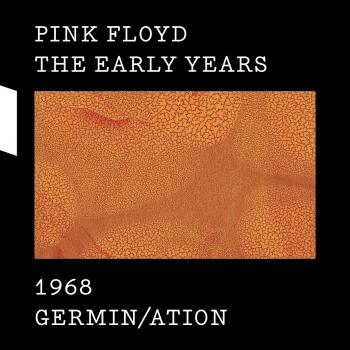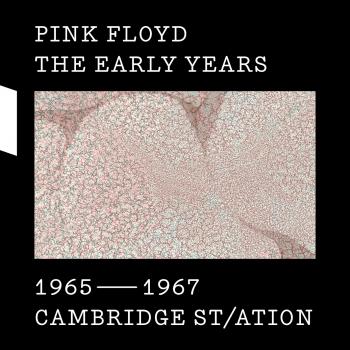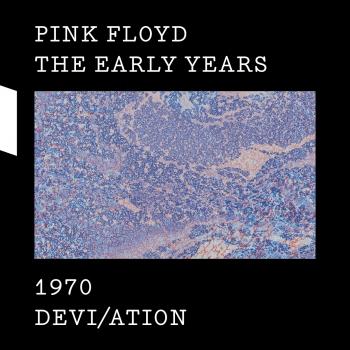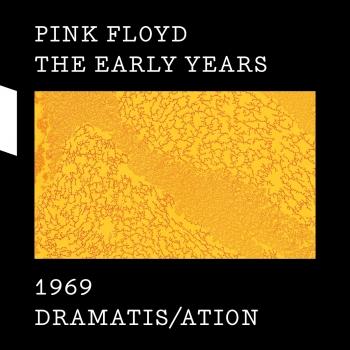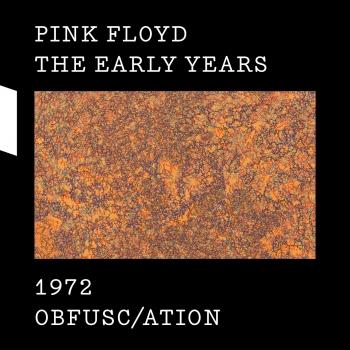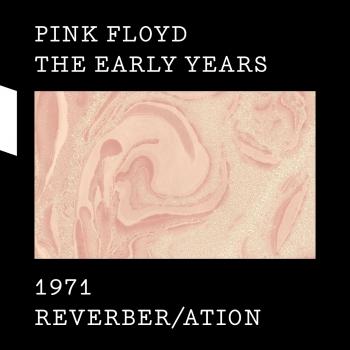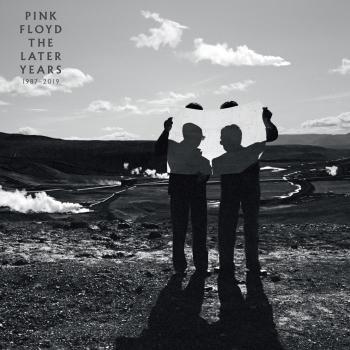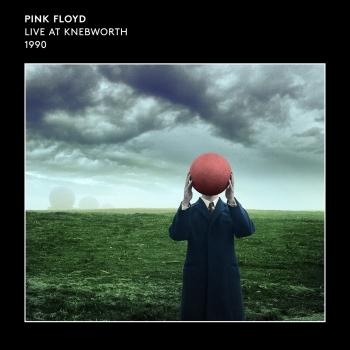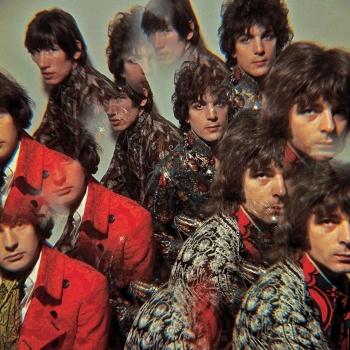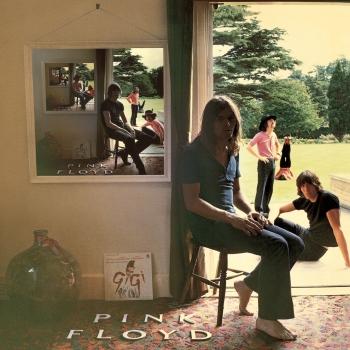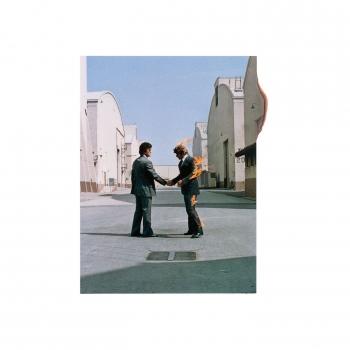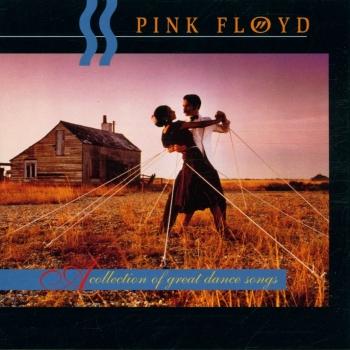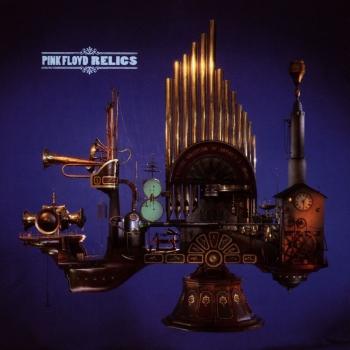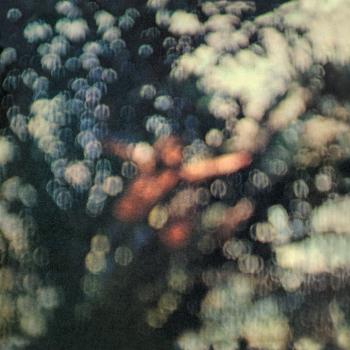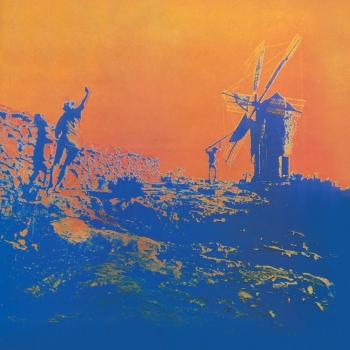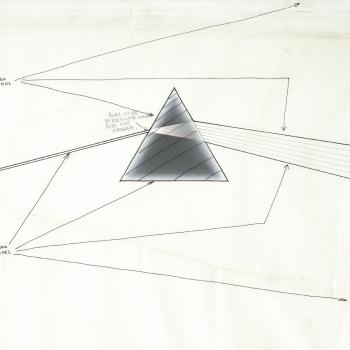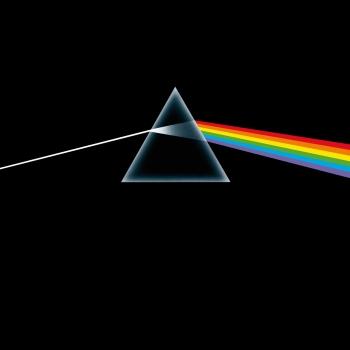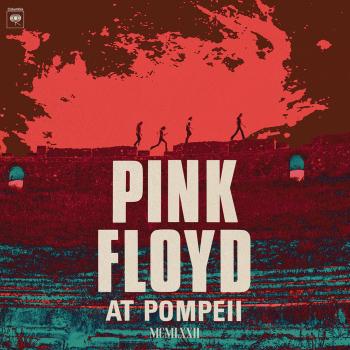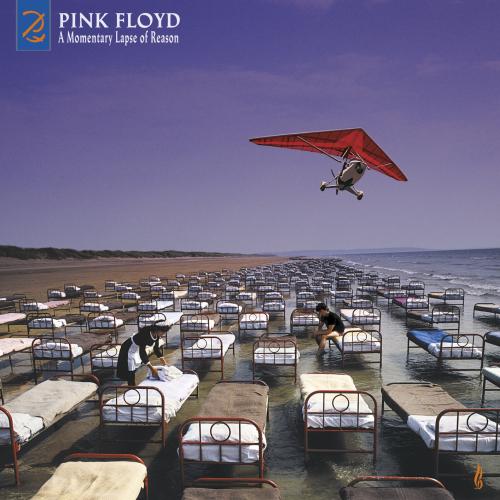
A Momentary Lapse Of Reason (2019 Remix) Pink Floyd
Album info
Album-Release:
2019
HRA-Release:
22.10.2021
Album including Album cover
I`m sorry!
Dear HIGHRESAUDIO Visitor,
due to territorial constraints and also different releases dates in each country you currently can`t purchase this album. We are updating our release dates twice a week. So, please feel free to check from time-to-time, if the album is available for your country.
We suggest, that you bookmark the album and use our Short List function.
Thank you for your understanding and patience.
Yours sincerely, HIGHRESAUDIO
- 1 Signs Of Life (2019 Remix) 04:23
- 2 Learning To Fly (2019 Remix) 04:52
- 3 The Dogs Of War (2019 Remix) 06:04
- 4 One Slip (2019 Remix) 05:10
- 5 On The Turning Away (2019 Remix) 05:42
- 6 Yet Another Movie (2019 Remix) 06:15
- 7 Round And Around (2019 Remix) 01:12
- 8 A New Machine (Pt. 1) (2019 Remix) 01:46
- 9 Terminal Frost (2019 Remix) 06:16
- 10 A New Machine (Pt. 2) (2019 Remix) 00:39
- 11 Sorrow (2019 Remix) 08:46
Info for A Momentary Lapse Of Reason (2019 Remix)
Remixed and updated from the original 1987 master tapes for ‘The Later Years’ by Andy Jackson with David Gilmour, assisted by Damon Iddins, the album will be available in 96/24 and MQA.
The release of ‘The Later Years’ project in 2019 gave an opportunity for a fresh overview of the ‘A Momentary Lapse Of Reason’ album, originally released in 1987. By returning to some of Richard Wright’s original keyboard takes, and by re-recording new drum tracks with Nick Mason, producers David Gilmour and Bob Ezrin have restored a better creative balance between the three Pink Floyd members.
“Some years after we had recorded the album, we came to the conclusion that we should update it to make it more timeless, featuring more of the traditional instruments that we liked and that we were more used to playing. This was something we thought it would benefit from. We also looked for and found some previously unused keyboard parts of Rick’s which helped us to come up with a new vibe, a new feeling for the album”.
David reflects on originally recording the album: “Bob Ezrin had worked on ‘The Wall’ with us back in ’79 and on some solo albums with me. I learnt a lot from Bob and he’s a valuable person to have on board. We started working on pieces of music that I had been writing and, come Christmas, we knew it was going well. One day, I felt this ‘thing’ coming on me that became Sorrow. I wrote five verses one evening. They just flowed out from nowhere in one of those great serendipitous moments that you recognize later as having been very valuable…. I knew that we were on a good roll and that this thing was going to work.” (David Gilmour)
“Initially it seemed a bit odd to start re-assembling a record after 35 odd years, but the public’s appetite for alternate views of the same work has undoubtedly increased immeasurably over time.
Inevitably the opportunity to revisit earlier work from a period where digital technology was the brave new world became increasingly interesting.
There’s little doubt of the advantages in being able to find new elements within the music, or more often uncovering elements that became overwhelmed with all that new science…I think there is an element of taking the album back in time and taking the opportunity to create a slightly more open sound – utilising some of the things we had learned from playing so much of the album live over two massive tours.
I enjoyed re-recording drum tracks with unlimited studio time. Momentary Lapse had been recorded under considerable stress and time constraints, and indeed some of the final mixing was done at the same time as rehearsals for the forthcoming tour.
It was also nice to have an opportunity to enhance some of Rick’s work. Again, that positive tidal wave of technology just might have provided too many digital opportunities to overwhelm the band feel. Hopefully that’s one of the benefits of this remix!” (Nick Mason)
The remixed and updated ‘A Momentary Lapse Of Reason’ album also features a new album cover using an alternative beds photo by Robert Dowling from the original album cover shoot directed by the late Storm Thorgerson. Echoing the iconic original sleeve the 2021 album artwork is designed and art directed by Aubrey Powell/Hipgnosis and Peter Curzon/StormStudios.
David Gilmour, vocals, guitars, keyboards, drum machine, sequencers, production
Nick Mason, electronic and acoustic drums, sound effects, spoken vocals (on "Signs of Life", "Learning to Fly" and "Terminal Frost")
Richard Wright, piano, Kurzweil, Hammond organ, backing vocals
Additional musicians:
Bob Ezrin, keyboards, percussion, sequencers, production
Jon Carin, keyboards
Patrick Leonard, synthesizers
Bill Payne, Hammond organ
Michael Landau, guitar
Tony Levin, bass, Chapman Stick
Jim Keltner, drums
Carmine Appice, drums
Steve Forman, percussion
Tom Scott, alto saxophone; soprano saxophone
John Helliwell, saxophone (credited as "John Halliwell")
Scott Page, tenor saxophone
Darlene Koldenhoven (as Darlene Koldenhaven), backing vocals
Carmen Twillie, backing vocals
Phyllis St. James, backing vocals
Donnie Gerrard, backing vocals
Produced by Bob Ezrin David Gilmour
Digitally remastered
Pink Floyd
Inductees: Syd Barrett (guitar, vocals; born January 6, 1946; died July 7, 2006), David Gilmour (guitar, vocals; born March 6, 1944), Nick Mason (drums; born January 27, 1945), Roger Waters (bass, synthesizer, vocals; born September 9, 1944), Rick Wright (keyboards, synthesizers; born July 28, 1945; died September 15, 2008).
Pink Floyd’s hallucinatory presentation of lights and music at London’s Roundhouse in 1966 brought psychedelia to the U.K. scene. The group carried rock and roll into a dimension that was more cerebral and conceptual than what preceded it. What George Orwell and Ray Bradbury were to literature, Pink Floyd is to popular music, forging an unsettling but provocative combination of science fiction and social commentary. In their early years, with vocalist, guitarist and songwriter Syd Barrett at the helm, Pink Floyd were the psychedelic Pied Pipers of the “London underground” scene. In the Seventies, with bassist Roger Waters providing more of the songwriting and direction, Pink Floyd became one of the most influential rock bands of all time.
Before they settled on Pink Floyd, the group went by the names Sigma 6 and the Architectural Abdabs, and they mainly performed rhythm and blues covers. Singer-guitarist Syd Barrett provided Pink Floyd with most of its original early material, including the British hits “See Emily Play” and “Arnold Layne.” Barrett’s elfin, tuneful psychedelia made him the Lewis Carroll of the pop scene. Pink Floyd’s debut album, Piper at the Gates of Dawn, is a classic of psychedelic whimsy that epitomized the remarkable year of 1967 at its most playful and creative. As the British music magazine Q opined in 1995, “Piper at the Gates of Dawn is, even counting Sgt. Pepper, possibly the defining moment of English psychedelia and Syd Barrett’s magnum opus.” Among its highlights was a nine-minute instrumental, “Interstellar Overdrive,” that represented one of rock’s first forays into deep space. It was a preoccupation of Pink Floyd’s that would later surface in songs like “Set the Controls for the Heart of the Sun” (from A Saucerful of Secrets) and the group’s masterwork, Dark Side of the Moon.
Intense experimentation with LSD unfortunately transported Barrett from enlightenment to mental instability, and increasingly unpredictable behavior necessitated his departure from Pink Floyd in 1968. Among the prime “acid casualties” of the Sixties, Barrett subsequently released two magnificent, if eccentric, solo albums – The Madcap Laughs and Barrett, both from 1970 – with considerable input from his erstwhile bandmates in Pink Floyd. Thereafter, however, Barrett became one of rock’s most legendary hermits and the subject of Roger Waters’ tributary opus “Shine On You Crazy Diamond.” It was the side-long centerpiece of Pink Floyd’s Wish You Were Here (1975) and a sterling example of what the group has referred to as its recurring “theme of absence.”
With guitarist David Gilmour on-board as Barrett’s replacement, Pink Floyd’s lineup remained constant for the next 15 years. In the wake of Piper, they recorded psychedelic soundscapes such as A Saucerful of Secrets and the double album Ummagumma, which comprised one disc of live performances and one of individual works by each band member. Laid-back but experimental, Pink Floyd kicked off the Seventies with the pastoral, atmospheric albums Atom Heart Mother (1970) and Meddle (1971). Each featured a side-long epic, “Atom Heart Mother Suite” and “Echoes,” respectively. Fittingly for a band with who took a cinematic approach to music, Pink Floyd provided music for three films. Their work as film scorers can be heard on the soundtrack albums More (1969), Zabriskie Point (1970) and Obscured by Clouds: Music from La Vallee (1972).
Their 1973 release Dark Side of the Moon hit Number One on the Billboard charts and ultimately broke all records by remaining on the Top 200 album charts for 741 weeks. Dark Side of the Moon did not drop off Billboard’s Top 200 album chart until 1988. The album signaled rock’s willingness to move from adolescence into adulthood, conceptually addressing such subjects as aging, madness, money and time. From its prismatic cover artwork to the music therein, Dark Side of the Moon is a classic-rock milestone. The subject of alienation was further explored in Wish You Were Here (1975), an album whose central preoccupation was the band members’ distance from each other (“Wish You Were Here”) and erstwhile leader Syd Barrett’s distance from reality (“Shine On You Crazy Diamond”). They turned their gaze outward yet again on the Orwellian Animals (1977), whose songs bore the titles “Pigs,” “Sheep” and “Dogs.”
Success continued into the Eighties with The Wall, a four-sided epic about a rock star named Pink who suffers a nervous breakdown while on tour. Much of it reflected chief architect Roger Waters’ dim view of the concert experience as rock expanded into arenas and stadiums. “I wanted to make comparisons between rock and roll concerts and war,” Roger Waters toldRolling Stone in 1982. He elaborated on this central tenet in the liner notes forThe Wall Live: 1980-81: “The idea that we, as individuals, generally find it necessary to avoid or deny the painful aspects of our experience, and in fact often use them as bricks in a wall behind which we may sometimes find shelter, but behind which we may just as easily become emotionally immured, relatively simply stated and easy to grasp.” That, in a nutshell, is the theme pursued by Pink Floyd from Dark Side of the Moon forward.
Possibly the most pessimistic album ever to reach #1, The Wall also addressed childhood, education and marriage, finding all of these passages to be dehumanizing. The Wall, the most theatrical and complex stage show that rock had ever seen, was performed 24 times in multi-night stands at four places - London, Los Angeles, Long Island and Dortmund, Germany. During the performance, an actual “wall” was constructed in front of the band, and its collapse at the end provided a fitting denouement. The Wall was subsequently revived by Roger Waters for a star-studded staging in Berlin in 1990, to commemorate the unification of East and West Germany. Performances from the Pink Floyd’s original staging of the epic saw release in 2000 as The Wall Live: 1980-81.
In the wake of The Wall, Pink Floyd itself gradually seemed to collapse, at least temporarily. The Wall turned out to be the last album the foursome of Waters, Gilmour, Wright and Mason recorded together. The Final Cut, which was recorded under extreme duress, found Wright absent from the group. Almost wholly Waters’ vision, it was an antiwar album triggered by Britain’s 1982 conflict in the Falkland Islands. The group unofficially disbanded after its release, and that seemed to mark the end of Pink Floyd, as the members involved themselves in endeavors, including solo projects, outside the band.
Throughout their history, the members of Pink Floyd have projected a rather static personal image, allowing music, lyrics, lighting and theatrical settings to communicate for them. Consequently, they’ve largely avoided the sort of public scrutiny that typifies the lives of rock stars. Little was known or reported about their personal lives. Only when a bitter war of words and a court battle erupted between Roger Waters and the others after Gilmour, Mason and Wright reconvened Pink Floyd was the silence broken.
Pink Floyd released Momentary Lapse of Reason in 1987 and followed it up a year later with Delicate Sound of Thunder, a live album drawn from an extensive tour. The group reconvened in the Nineties with Gilmour again at the helm, releasing The Division Bell in 1994 and another tour souvenir,Pulse, a year later. Both albums went to the top of the charts, proving that the public’s fascination with this most unconventional supergroup had not dimmed in the least. (Source: www.rockhall.com)
This album contains no booklet.











